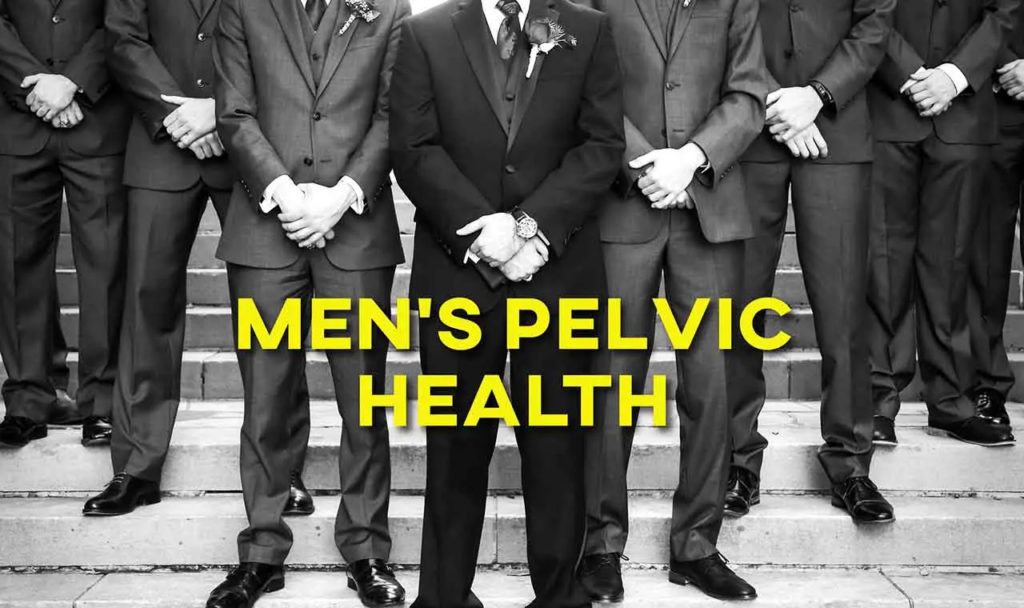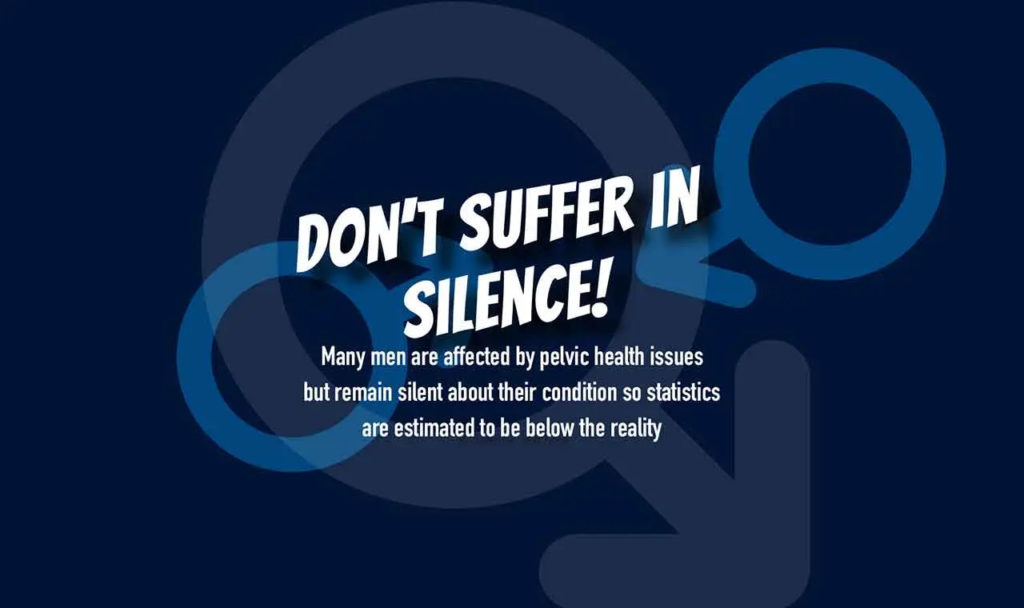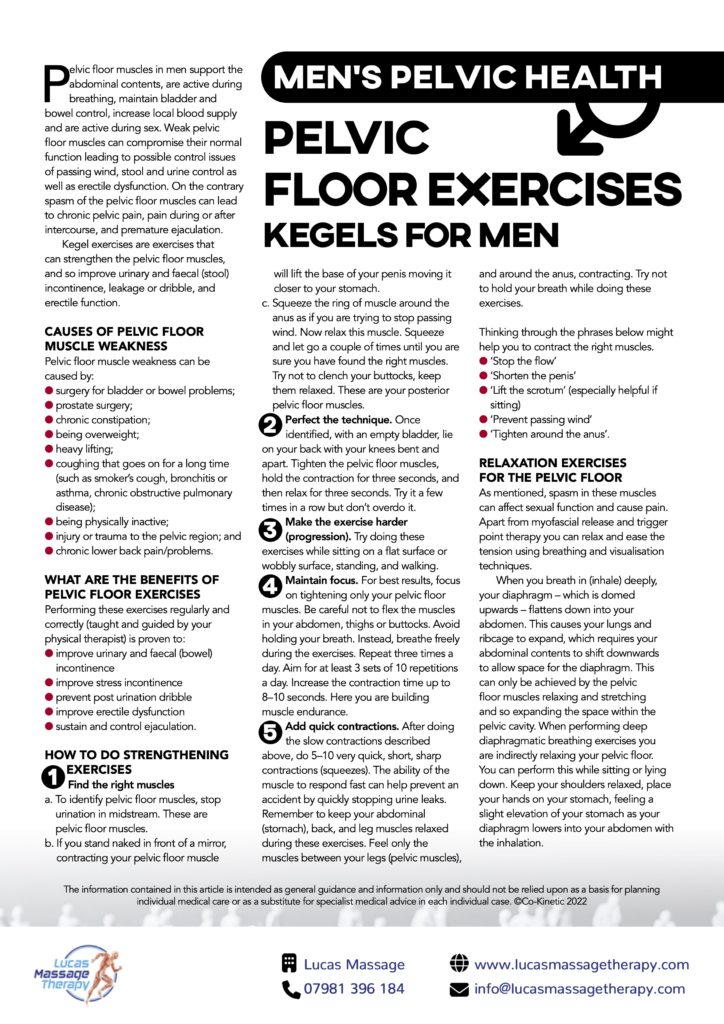Men’s Pelvic Health Issues and How Physical Therapy Can Help
Men’s pelvic health concerns have not received sufficient focus, research, and acknowledgement. Problems related to pelvic health in men encompass a variety of issues, including discomfort, involuntary release of urine or faeces, as well as sexual and penile complications. These problems can affect men of all ages, from those leading sedentary lifestyles to weekend warriors or even professional athletes. Pelvic health ailments can arise from the natural ageing process, unhealthy lifestyle choices, or as a result of injury, chronic illness, or surgical procedures.
The medical community has primarily focused on women’s pelvic and urogenital issues, which has left men feeling confused, isolated, and in search of answers. Unlike women, who receive regular gynaecological check-ups and have access to various resources such as education, treatments, and support groups for pelvic issues related to pregnancy and menopause, men tend to pay little attention to their reproductive health unless they experience problems. When problems do arise, embarrassment or shame are often associated with the issue rather than concern or understanding of any underlying medical condition.
Public awareness campaigns and support groups often focus on addressing issues concerning women, such as incontinence, pelvic pain, and sexual health concerns. Traditionally, women tend to be more comfortable discussing these matters openly with other women or friends, seeking emotional support, advice, and guidance on how to cope with such problems.
Conversely, there is less societal stigma attached to female pelvic and genital issues compared to those experienced by men. However, this should not be deemed acceptable. Men are recognized for their tendency to remain silent when facing their own problems, associating silence with concepts like strength or stoicism. They rarely engage in discussions about personal issues with their friends or medical professionals, consequently failing to address the problem at hand.
Experiencing chronic pain, social isolation, damaged relationships, and the potential emergence of mental health issues like anxiety and depression are the consequences. Suicide is one of the top three causes of death worldwide for individuals aged 15 to 44. Men globally have a suicide rate 3 to 4 times higher than women, particularly between the ages of 45 and 49. Seeking medical treatment for conditions like pelvic health problems, which have a strong correlation with mental health issues, is of utmost importance.

How Pelvic Health Issues Arise in Men
The pelvic region is a complex area present in both men and women. It plays a significant role in supporting our weight and enduring various movements such as lifting, jumping, running, and walking. Connecting the legs to the trunk, the pelvis is supported by robust ligaments and muscles that maintain both form and function.
Alongside facilitating movement like walking, climbing stairs, getting dressed, bending, and sitting, the pelvis also houses vital organs such as the bladder, bowel, and reproductive organs. Nerves intricately supply the pelvis, ensuring harmonious coordination between muscles, sphincters, and organs for seamless physical movement, proper control of voiding (urine, wind, and fecal matter), and optimal reproductive and pleasurable sexual function, all without pain.
Pelvic issues can arise for various reasons. Factors such as chronic illness, medical conditions, cancer, and injury resulting from surgery or radiation can all have an impact on the muscles and nerves in the pelvic region, leading to difficulties with urinary, bowel, and penile functions. Engaging in physical activities like weightlifting, cycling, running, skiing, or playing football can also contribute to the development of pelvic pain, often caused by strain, overuse injury, poor technique, hernia, or muscle imbalance.
Similarly, a sedentary lifestyle involving prolonged periods of sitting (e.g. gaming or job-related requirements), being overweight, having an unhealthy diet, or experiencing stress can all contribute to pelvic health problems.
Men of different ages and levels of athleticism can experience chronic pelvic pain (CPP) without an identifiable cause. This condition is often accompanied by symptoms of urinary, bowel, and sexual dysfunction. CPP can be closely linked to existing mental health issues or result in adverse behavioural and emotional reactions. Factors such as work stress, financial worries, grief, loneliness, or divorce can induce anxiety, potentially affecting bladder and bowel control, as well as sexual performance (such as difficulty achieving or sustaining an erection, or premature ejaculation).
Persistent pelvic pain and difficulties with penile function and urinary control can have a negative effect on intimacy, relationships, self-esteem, and work routine. This can result in feelings of shame, embarrassment, isolation, anxiety, and depression. Break the cycle and don’t let it continue. Don’t adjust your social, recreational, or professional life to accommodate pelvic health issues. Instead, seek assistance, guidance, medication, treatment, and support to maintain a fulfilling life.

Benefits of Physical Therapy for the Pelvic Floor
Pelvic floor physiotherapy can provide significant assistance in addressing various issues encountered by men when their pelvic floor muscles are not functioning correctly. Physiotherapy and sports massage can aid in managing the following conditions: post-prostate surgery incontinence, erectile dysfunction, chronic prostatitis, testicular and penile pain syndromes, nocturia (excessive nighttime urination), symptoms of urine retention commonly associated with benign prostate hyperplasia and/or a tense pelvic floor, tight pelvic floor muscles, chronic constipation, and fecal incontinence.
There are several treatment options available in physical therapy, such as exercise therapy, trigger point release, acupuncture, and biofeedback (retraining the muscle to work in the correct sequence). Relaxation and stress relief can be facilitated through deep tissue massage, sports massage and deep breathing exercises, which might help alleviate symptoms of anxiety and depression. Receiving advice and guidance on leading a healthy and active lifestyle can greatly contribute to improving mental health and reducing certain symptoms.
Please remember that you are not alone. Male pelvic pain is the most prevalent urological condition among men under 50 years old and the third most common among men over 50. In both Europe and the USA, approximately 15% of men experience prostatitis (prostate inflammation) on average. However, these numbers are likely even higher as men often do not seek help or report their pelvic issues.
Seeking treatment may involve a combination of counselling (to address social and emotional concerns, anxiety, depression, relationships, or work-related issues), physical therapy (utilizing various treatment methods), and exercise therapy (to alleviate pain, enhance functionality, and improve control). Take the initiative to contact your physical therapist or medical professional and take the first step towards reclaiming your life.
Pelvic Floor Exercises for Men


We’re talking bladder control, bowel movements and yep, the reproductive organs as well. All these crucial functions are controlled by muscles in the pelvis.
Dysfunction in any of these areas is something you need to see a doctor about asap. In some cases, symptoms can be a sign of a more serious health problem such as prostate cancer.
What are Common Pelvic Health Issues for Men?
Issues in the pelvic region vary greatly, from pain to leaky bladders or bowels to sexual dysfunction problems like premature ejaculation. They’re also more common than you might think, and most are easily managed or treated once medical help has been requested.
FREE Men’s Pelvic Health Resource Pack
Download our Lucas Massage Therapy free information pack and find out everything you need to know about men’s pelvic health.
What You’ll Learn:
- The different signs and symptoms to look out for in the pelvic region
- When symptoms might indicate prostate cancer
- How pelvic health conditions are treated
- The dangers of ‘staying silent’
- How a few simple exercises can make a big difference to your pelvic health

